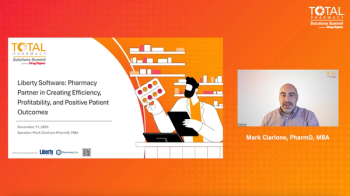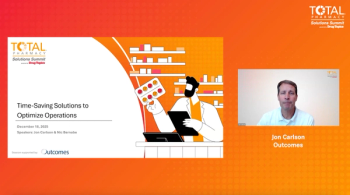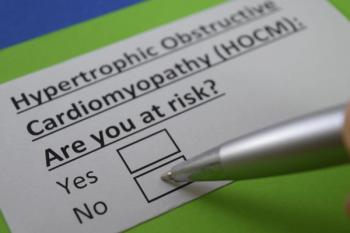
Ethics and pain
A new bimonthly column from Ken Baker looks at ethical decision-making in pharmacy.
One hundred sixty years ago, in 1852, the American Pharmaceutical Association adopted its first Code of Ethics for pharmacists1, a code centered in the moral obligations pharmacists owe their patients.2 The preamble to the current Code of Ethics3 declares that the pharmacist’s duty is to “assist individuals in making the best use of medications.” The Code is designed to “guide pharmacists in relationships with patients, health professionals, and society.”4
Article Seven of the Code states: “A pharmacist serves individual, community, and societal needs.” The statement is simple and direct. There are times, however, that conflicts arise when a practitioner tries to serve two masters simultaneously. In such instances, pharmacists may find themselves on the horns of a dilemma.
The problems are particularly acute in the dispensing and control of drugs with the potential for abuse, particularly drugs for pain. How does the pharmacist decide when the prescription is for a legitimate medical purpose and when it is not?
Needs of the patient
Indiana law, while not unique, says it well.5 It mandates that each pharmacist shall “exercise his professional judgment in the best interest of the patient’s health.” It further states that the “pharmacist has a duty to honor all prescriptions” from a licensed prescriber.5 The Code of Ethics, state law, and even federal law make clear that the pharmacist’s first obligation is to the patient.
Community and societal needs
There is then the obligation to society. A prescription written without a legitimate medical purpose, even if written by a licensed prescriber, is not a valid order and may not be filled.
Again, Indiana law says it well: “Before honoring a prescription, the pharmacist shall take reasonable steps to determine whether the prescription has been issued in compliance with the laws of the state where it originated.”5
Turning a blind eye to a questionable prescription is neither ethical nor legal, nor is it in the best interests of the patient. The pharmacist must take reasonable steps to answer real questions of legitimacy, while not turning away a patient who is in pain.
Drug enforcement officers have argued that the mere fact that the physician has written for high levels and/or combinations of drugs that are often abused is sufficient to show there is no legitimate medical purpose to the prescriptions.6
Physicians and pain specialists argue that high doses of drugs and drugs prescribed in combination may be evidence of high levels of pain and of a truly needy patient - the definition of a legitimate medical purpose.6
The pharmacist is often caught in the middle. Drugs should not be dispensed when there is no legitimate medical purpose. But a physician’s judgment, because of his expertise and training, should be given proper deference.
And a patient in pain should not be turned away when the pharmacist can help.
In a busy pharmacy, the pharmacist may have only minutes to make a decision. The Code of Ethics provides some guidance: The legitimate medical needs of the patient are paramount.
As the Code of Ethics makes clear, “The primary obligation of a pharmacist is to individual patients.”2
References
1. Buerki RA, Vottero LD, Ethical Responsibility in Pharmacy Practice, 2nd ed, pp. 106–107, AIHP 2002. The APhA Code was preceded by the ethical code adopted by the Philadelphia College of Pharmacy in 1848.
2. See APhA website: http://www.pharmacist.com/code-ethics, accessed September 28, 2012.
3. I will refer to the APhA Code of Ethics as the pharmacist’s Code of Ethics or simply as the Code of Ethics because, while other organizations, including ASHP and NCPA, have patient’s bills of rights moral treatises, APhA’s Code of Ethics has been generally adopted by the entire profession as its ethical statement.
4. APhA Code of Ethics for Pharmacists, Preamble. http://www.pharmacist.com/code-ethics. accessed September 28, 2012.
5. Indiana Code, IC 25-26-13-16. See statute for full text.
6. Gilbert JA, Palmer KL, “The DEA opines on a pharmacist’s ‘corresponding responsibility,’” FDA Law Blog, Hyman, Phelps & McNamara, PC, December 1, 2010, published on-line, accessed January 2011.
These articles are not intended as legal advice and should not be used as such. When a legal question arises, the pharmacist should consult with an attorney familiar with pharmacy law in his or her state.
Ken Bakeris a pharmacist and an attorney consulting in the areas of pharmacy error reduction, communication, and risk management. Mr. Baker is an attorney of counsel with the Arizona law firm of Renaud Cook Drury Mesaros, Pa. Contact him by e-mail at ken@kenbakerconsulting.com.
Newsletter
Pharmacy practice is always changing. Stay ahead of the curve with the Drug Topics newsletter and get the latest drug information, industry trends, and patient care tips.











































































































































































































